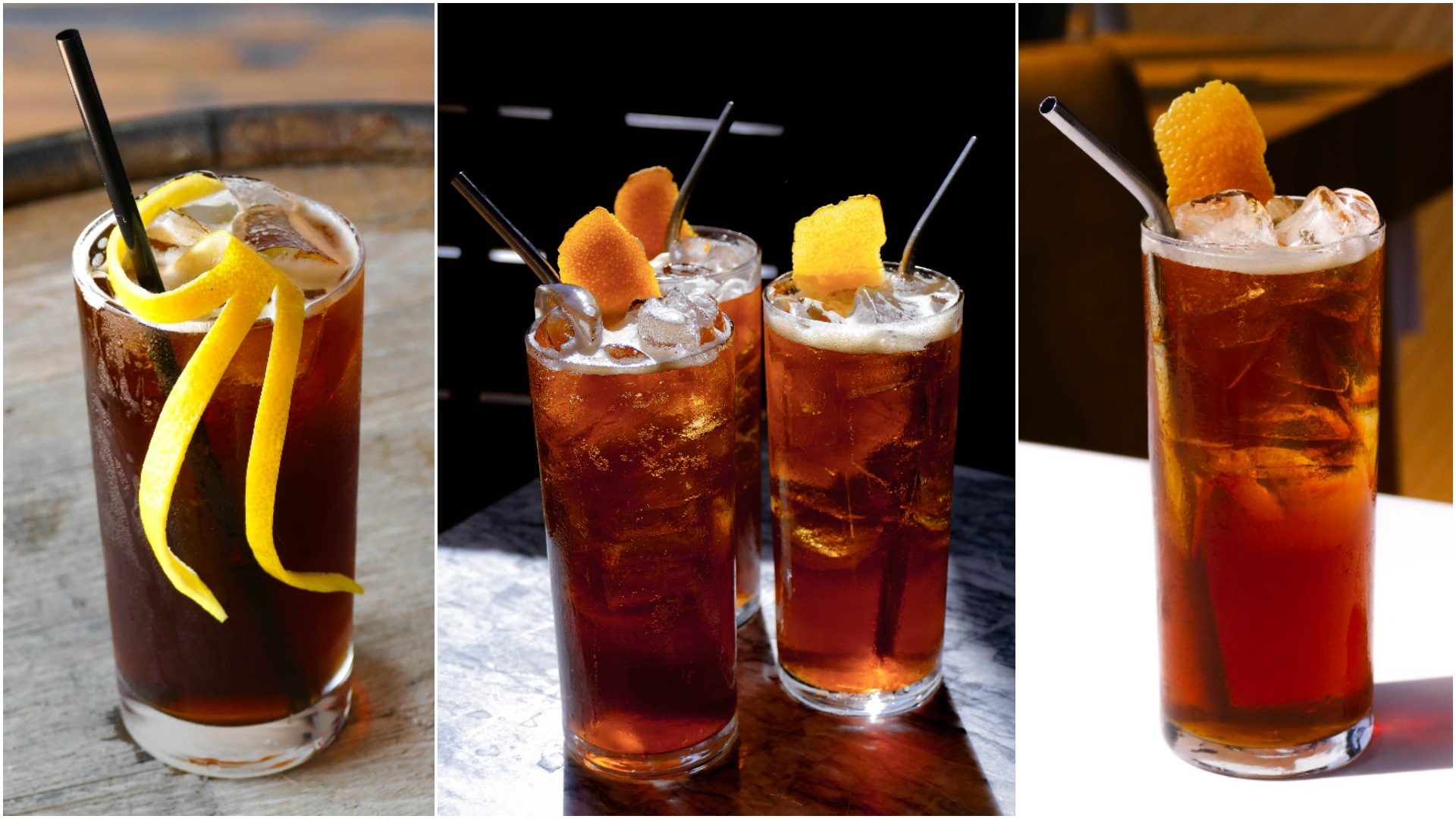Coffee Soda Looks To Build A National Buzz
About five years ago, a friend took me to a Nashville coffee shop to try something called coffee soda, which sounds like a mash-up of two of America's favorite beverages. The effervescent, iced tea-hued drink was served in a cup, accompanied with a sliver of an expressed orange peel. It tasted like no other coffee drink I'd had before.
Nathanael Mehrens, co-creator of the coffee soda I consumed, describes it as tasting "like an orange Tootsie Pop," with coffee's richness and citrus. Until recently, coffee soda couldn't be easily found outside of Nashville, because it's a Music City creation (or so Nashvillians proudly claim).
Six years ago while working as a barista manager at Crema coffeeshop, Mehrens and Crema owners Ben and Rachel Lehman fashioned a Nashville coffee soda and named it Kenya Karinga Soda, after the single-origin coffee. The goal? To carbonate coffee itself, creating a more effervescent version of iced coffee that didn't water down its soul.
To his knowledge, no one else was doing something like this. He came across Manhattan Special, a bottled espresso soda invented in New York way back in 1895, but it's a more syrup-forward version of what he concocted. "In pretty much every instance I could find, it was somebody had made a soda and then added coffee flavoring to it or a coffee concentrate," he says.
Starbucks and Pepsi joined forces in 1994 in an attempt to stake their claim in the coffee soda market. The bottled and draft beverage, named Mazagran, contained brewed Starbucks coffee, high fructose corn syrup, and carbonated water. The drink didn't catch on, however, and Starbucks discontinued it. Between 2006 and 2008, Coca-Cola jumped on the coffee soda bandwagon with BlaK, but this was closer to Coke with coffee flavoring.
Flash-forward to present day and, in our constant search of the newest, coolest thing, people seemed to have warmed to the idea of carbonated coffee.
Mehrens differentiated himself from Mazagran and BlaK in brewing the coffee hot and then flash-chilling it (using the Japanese iced coffee method). He added a demerara sugar and citric acid syrup to the brewed coffee, then carbonated it. The drink is typically served with the orange peel.
In 2014, Mehrens exited Crema to co-found Steadfast Coffee, which opened a brick-and-mortar in 2015 in Nashville's Germantown neighborhood. Around the same time he joined Steadfast, Mehrens also birthed Matchless Coffee Soda. It's become a symbiotic relationship: Mehrens uses Steadfast's roasts to brew the coffee used in the soda, and then sells the product at Steadfast and other coffee shops and cafes around town.
The soda developed a big enough following that last summer Matchless launched a Kickstarter and raised more than $38,000 to enter the market of ready-to-drink cans. This spring, the four-packs launched online and are now shipping nationwide. The way they mass-produce the drink is by first brewing the coffee hot, then flash-chilling it through a heat exchanger to halt oxidation. Then the sugar is added and everything goes into a carbonation tank. Once the coffee is fully carbonated, the soda either goes into kegs or cans.
"The bubbles make it crisp and because it's lightly sweetened, it isn't sticky or syrupy like soda or other sweetened coffee drinks," says Megan Seling, culture editor of Nashville Scene, the city's alt-weekly. "I wonder if that's why it's so popular down here—Nashville can get so hot and humid and even iced coffee doesn't cut it sometimes. But the coffee soda, with the bubbles, keeps its refreshing composure."
It could be the high-quality coffee, or it could be that Nashville heat. Crisp, fizzy, and only lightly sweet, coffee soda hits notes that other sugary, iced coffee drinks don't. Perhaps that's why the word "refreshing" comes up a lot when discussing coffee soda, and it may be one reason why it's beginning to show up in cans and on café menus across the country. Over the past year, coffee sodas have increasingly popped up outside Nashville, including New York City's Keepers and Upruit; and Portland, Oregon-based Stumptown.
Brooklyn's Homecoming—a home retail store with a café—serves Topocano, an Americano topped with Topo Chico. Collective Espresso in Cincinnati pours a can of flavored San Pellegrino over a shot of espresso in what they call Espressoda. Intelligentsia in Chicago vends Limelight: cold brew shaken with simple syrup and lime juice and topped with tonic water.
"While you could just mix your coffee or espresso with soda or sparkling water, it won't be the same," says the Scene's Seling. "The non-carbonated coffee just cuts the carbonation of the water and makes it kind of flat. The bubbles [of Matchless' coffee soda] sing. It sounds cheesy, but it's true—it just dances on your tongue."
Says Matchless' Savannah Packard: "If we can show people the cult following it has in Nashville, we just may have a chance of creating a whole new genre of beverage." As hot chicken goes from Nashville to the rest of the country, maybe, so goes coffee soda?
